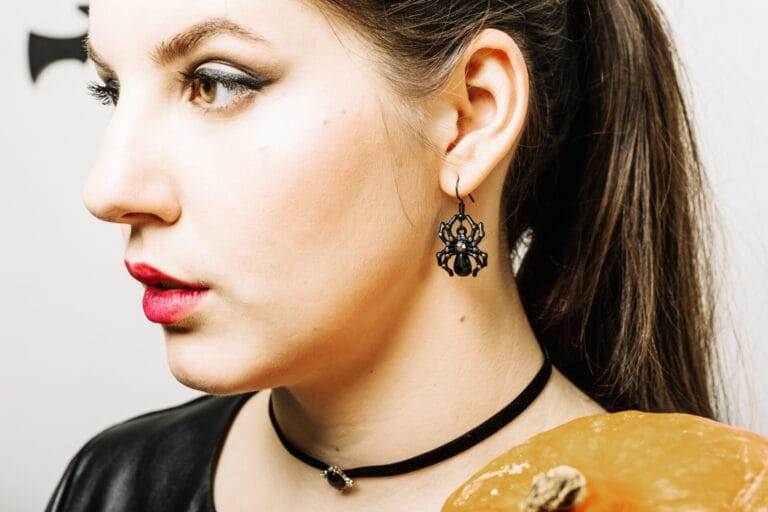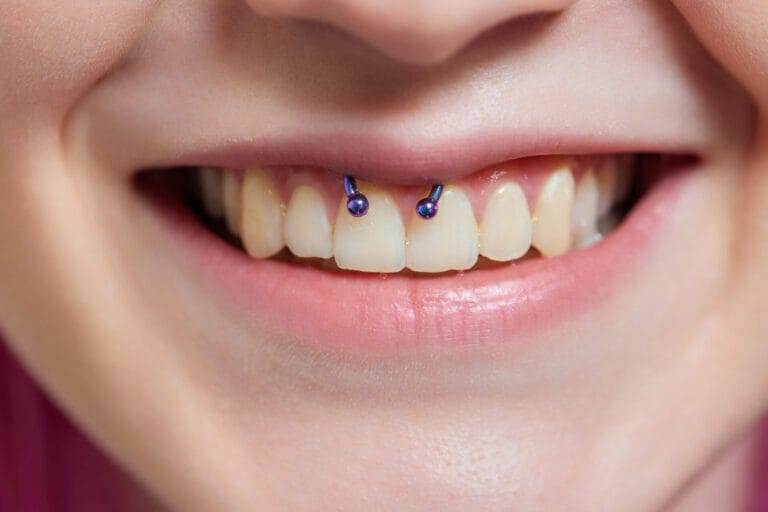The journey into body piercing is an exciting yet daunting experience for many. For those considering their first piercing, understanding the intricate balance between anticipation and anxiety is essential. It is not just about the artistic expression or the allure of body jewelry; it also encompasses the sensations and emotions that come with the procedure.
The Emotional Landscape of Piercing

Getting pierced is often accompanied by a whirlwind of feelings. Many individuals experience a mix of exhilaration and nervousness, which can lead to a range of physical reactions. Reflecting on my own first piercing experience, the moment I stepped into the studio, I was swathed in a cloud of excitement, yet my heart raced with apprehension. To help you navigate this emotional landscape, consider the following tips:
- Acknowledge your feelings: It’s normal to feel nervous.
- Share your experience: Talk to friends or family who have undergone piercing.
- Visualize success: Imagine how great the final result will be.
By understanding these emotions, one can prepare more effectively for the journey ahead. As we delve deeper into the process of body piercing, from pain perception to aftercare, it becomes clear that preparation plays a pivotal role in ensuring a smoother experience. Let’s explore these essential aspects to enhance your comfort and confidence in body piercing.
Understanding Pain Perception
As we transition from our initial excitement to the reality of getting pierced, it’s essential to delve into a critical aspect of the experience: pain perception. Understanding how pain is experienced can significantly impact how you prepare and mentally approach the procedure.
The Science Behind Pain Perception
Pain is not just a simple physical response; it is a complex interplay of sensory and emotional experiences. According to experts, several factors influence how an individual perceives pain, including:
- Individual pain threshold: This varies from person to person.
- Previous experiences: A scary or painful past experience can heighten anxiety.
- Expectations: Anticipating pain can sometimes intensify the sensation.
Reflecting on my own experiences, I recall feeling nervous before my first piercing. However, once I arrived at the studio and spoke with the piercer about what to expect, my anxiety diminished significantly. To help mitigate pain perception during the piercing process, consider the following strategies:
- Educate yourself: Understanding the piercing process demystifies it.
- Mindfulness techniques: Focus on your breathing to anchor yourself.
- Discuss concerns: Talk openly with the piercer about any fears you have.
By understanding the factors surrounding pain perception, you can take proactive steps to manage your experience effectively. As we proceed to prepare for the piercing, remember that being informed is a powerful tool in your journey.
Preparing for the Piercing
With a clear understanding of pain perception, it’s time to shift our focus to preparing effectively for your piercing experience. This preparation can make a world of difference not just in your comfort level but also in the overall quality of the procedure.
Choosing a Reputable Piercing Studio

Selecting the right piercing studio is crucial. A reputable studio not only prioritizes safety and hygiene but also creates a comfortable atmosphere. Here are some tips to help choose a trustworthy location:
- Research reviews: Look for online reviews or ask friends for recommendations.
- Check credentials: Ensure piercers have the necessary certifications and training.
- Visit in advance: A quick visit allows you to assess cleanliness and professionalism.
During my first piercing expedition, the studio I chose made a lasting impression with its hygiene protocols and welcoming staff. Their reassurance helped ease my nerves, turning anxiety into excitement!
Mental Preparation Techniques
Once you’ve chosen a studio, mental preparation becomes essential. Here are some effective techniques to consider:
- Visualize the process: Imagine each step going smoothly, from the consultation to the final reveal.
- Positive affirmations: Repeat phrases like “I am calm and ready” to boost confidence.
- Mindfulness practices: Engage in meditation or visualization exercises to center your mind.
Embracing these techniques not only enhances your mental readiness but also fosters a positive mindset as you approach your upcoming piercing adventure. With thorough preparation, you’re setting yourself up for a more satisfying experience. Let’s dive into the next phase: exploring various numbing options.
Numbing Options
As you prepare for your piercing, one key aspect to consider is how to manage discomfort during the procedure. Thankfully, there are effective numbing options available to help ease any potential pain. Let’s explore some of these options!
Topical Anesthetics
Topical anesthetics can be a game changer when it comes to minimizing discomfort during a piercing. These creams or gels are applied directly to the skin, working to numb the area before any procedure begins. Here are some things to keep in mind:
- Consultation: Discuss available topical anesthetics with your piercer; they often have preferred options.
- Application time: Typically, these need to sit on the skin for about 20-30 minutes before the piercing.
- Sensitivity: Some individuals may have reactions, so testing a small area in advance can be wise.
In my experience, using a topical anesthetic made a noticeable difference. The sensation was reduced significantly, allowing me to focus on the excitement of getting my new piercing rather than any anxiety.
Ice or Cold Compress
Another simple yet effective numbing method is the use of ice or a cold compress. Applying a cold source to the area can temporarily dull the sensation. Here’s how to use this method effectively:
- Timing: Apply the ice or cold compress about 10 minutes before your appointment.
- Protection: Wrap ice in a cloth to avoid direct skin contact, preventing frostbite.
- Duration: Keep it on for a few minutes; excessive cold can lead to discomfort.
Combining these numbing strategies can help create a more comfortable experience, ensuring that your piercing adventure is less about pain and more about the joy of self-expression. Up next, we will discuss relaxation techniques to further enhance your experience.
Relaxation Techniques
As you prepare for the piercing experience, incorporating effective relaxation techniques can greatly enhance your comfort level. By using relaxation strategies, you can manage anxiety and make the process stress-free and enjoyable. Let’s explore a couple of effective techniques to help you along the way.
Deep Breathing Exercises
Deep breathing exercises are simple yet powerful tools to calm your nerves. Practicing these can help slow your heart rate and clear your mind, making it easier to handle the anticipation of your piercing. Here’s how to get started:
- Find a quiet space: If possible, sit in a calm area before your appointment.
- Breathe in deeply through your nose: Count to four as you fill your lungs.
- Hold for four seconds: Pause and feel the tension release.
- Exhale slowly through your mouth: Count to six while releasing the air.
During my first piercing, I found deep breathing helped to set a tranquil tone. By focusing on my breath, I eased my nervous energy and was able to approach the procedure with a sense of positivity.
Distraction Methods
Another effective relaxation strategy is to use distraction methods, which can redirect your focus away from the piercing itself. Here are some ideas to consider:
- Bring headphones: Listen to your favorite calming music or a podcast.
- Engage in conversation: Chat with a friend or the piercer to keep your mind occupied.
- Visualization: Imagine a serene scene, such as a favorite vacation spot or a peaceful nature setting.
These techniques will not only help calm your spirit but can also transform the piercing experience into something more enjoyable and memorable. Next, we will discuss the importance of communication with your piercer to ensure a seamless process.
Communication with the Piercer



Once you have effectively prepared yourself through relaxation techniques, the next step in your piercing journey is to establish open communication with your piercer. This crucial interaction can significantly enhance the experience and ensure that your needs and concerns are addressed.
The Importance of Dialogue
Good communication fosters trust and helps create a comfortable environment. The more you engage with your piercer, the better prepared you’ll be for the procedure. Here are some aspects to consider when initiating this dialogue:
- Discuss your experience level: If it’s your first piercing, let them know. They can guide you through the process.
- Ask about the procedure: Inquire about each step, from preparation to aftercare. Understanding what to expect can greatly ease your anxiety.
- Share your concerns: If you have specific fears about pain or reactions, express these so that your piercer can address them.
During my own experience, the ability to share my apprehensions granted me peace of mind. The piercer patiently explained each part of the process and reassured me when I expressed nervousness.
Making the Most of the Consultation
Take advantage of the consultation by asking the right questions, such as:
- What type of jewelry is recommended?
- How do you ensure hygiene and safety?
- What aftercare tips can you provide?
Having open lines of communication not only helps build rapport but also enhances your overall experience. With a solid foundation of trust established, you’re well-prepared to proceed with confidence into the next steps of your piercing journey. After this, we’ll delve into essential aftercare and pain management strategies.
Aftercare and Pain Management
After completing your piercing, the focus shifts from preparation and execution to aftercare and pain management. Proper aftercare is vital for healing and can vastly reduce the risk of complications. It’s essential to establish and maintain a routine that promotes hygiene and comfort.
Cleaning and Hygiene Tips
Maintaining cleanliness post-piercing helps ensure that the area heals properly. Here are some critical tips for effective cleaning and hygiene:
- Use a saline solution: This aids in cleaning the piercing without irritating the area. You can either purchase saline or make your own with distilled water and non-iodized sea salt.
- Clean regularly: Aim to clean your piercing twice a day, gently wiping away any crust or discharge.
- Avoid touching: Minimize touching the piercing to reduce the risk of infection; always wash your hands before any contact.
Personally, I found that following a strict cleaning routine helped me feel more comfortable and secure about my healing process.
Recommended Pain Relief Methods
While some discomfort is normal, there are effective methods to manage pain:
- Over-the-counter pain relievers: Non-steroidal anti-inflammatory drugs (NSAIDs) such as ibuprofen can help reduce pain and swelling.
- Warm compresses: After a few days, applying a warm compress can soothe the area and enhance blood flow.
- Stay hydrated and rest: Staying well-hydrated and allowing your body time to recover are essential.
By following these aftercare and pain management strategies, you can ensure that your piercing heals smoothly. With this knowledge in hand, let’s explore potential complications and when to seek help to ensure a safe and enjoyable piercing experience.
Potential Complications and When to Seek Help
While many people heal from body piercings without any issues, being aware of potential complications is crucial for your overall safety. Understanding what to look for can help you address problems early, ensuring that your healing process goes as smoothly as possible.
Common complications to watch for
It’s essential to be vigilant post-piercing. Some common complications include:
- Infection: Signs of infection typically manifest as redness, swelling, or discharge that is yellow or green in color.
- Allergic reactions: If you notice itching, redness, or a rash around the piercing site after wearing jewelry, you may be allergic to the metal used.
- Keloids and hypertrophic scarring: Some individuals may develop raised scars around the piercing, which can be uncomfortable and unsightly.
When I got my cartilage piercing, I was particularly cautious about infections, so I made sure to clean it diligently. Thankfully, I avoided complications, but it’s always wise to be prepared.
When to Seek Help
Understanding when to consult a professional can make all the difference. If you experience any of the following, it’s time to reach out:
- Persistent pain: If pain worsens over time rather than improving.
- Fever or chills: Indicating a possible systemic infection.
- Unusual discharge: Consistent pus, especially if accompanied by pain or swelling.
Don’t hesitate to contact your piercer or a healthcare professional if you have concerns. Taking swift action can prevent more severe issues down the road. Now that you’re well-informed about complications, let’s wrap up by summarizing the essential steps to a successful piercing journey.
Conclusion
After exploring the intricacies of body piercing, from preparation to aftercare, it’s clear that a thoughtful approach can transform what may initially seem like a daunting experience into a rewarding one. By understanding and anticipating the process, you can ensure that you enjoy every aspect of your piercing journey.
Recap of Key Takeaways
Here’s a quick recap of the essential steps to keep in mind:
- Choose a reputable studio: Your choice of piercing studio sets the foundation for a safe experience.
- Prepare mentally and physically: Use relaxation techniques like deep breathing and visualization to ease anxiety.
- Prioritize aftercare: Proper cleaning and hygiene are crucial for healing and can prevent complications.
- Be aware of potential issues: Understanding what complications may arise allows you to act promptly.
Reflecting on my own piercing experiences, I realized that knowledge and preparation were pivotal in alleviating my fears. The confidence I gained from being informed led to each piercing feeling like a personal achievement rather than a source of anxiety.
Embrace Your Journey
In conclusion, body piercing is not just about adornment; it’s a unique form of self-expression that can be both exciting and empowering. By arming yourself with information and taking the necessary precautions, you can enjoy this process to the fullest. Whether it’s your first piercing or your tenth, approach each experience with enthusiasm and confidence!






